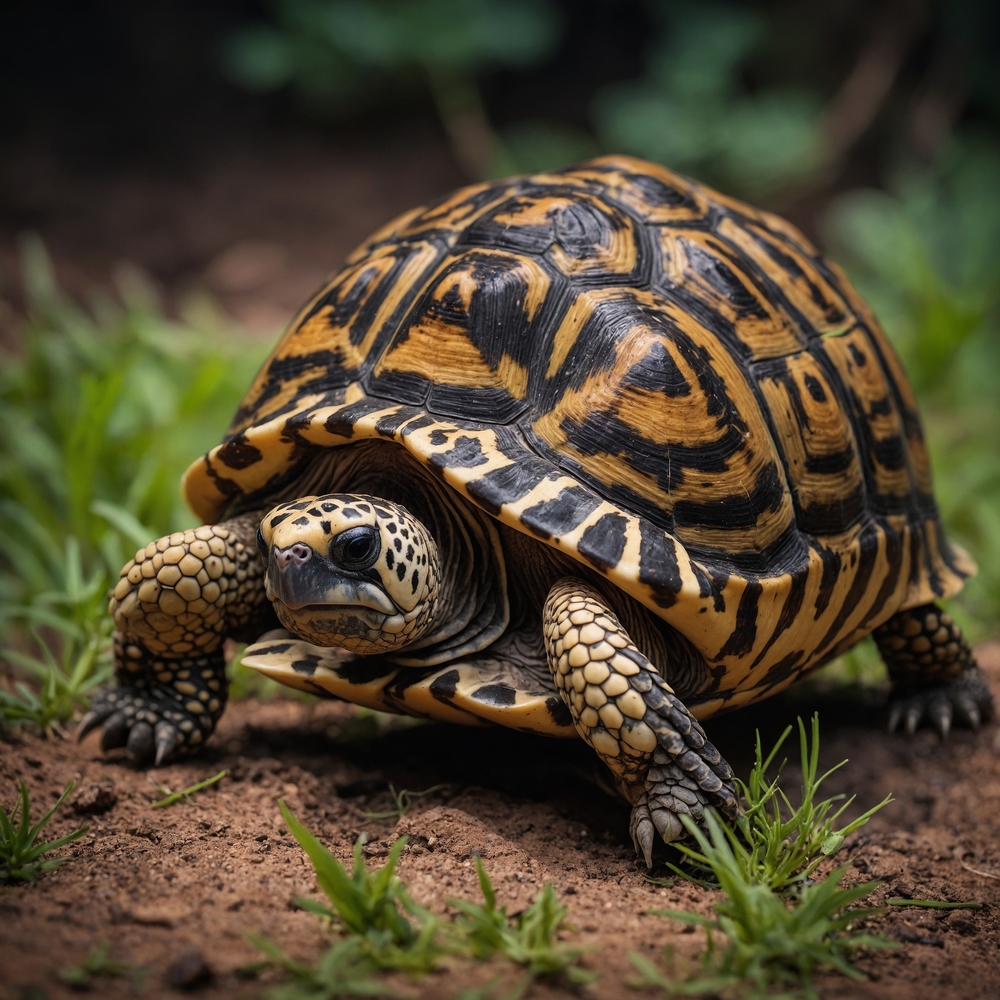Indian Star Tortoises (Geochelone elegans) are renowned for their striking appearance and unique patterns, making them one of the most sought-after species among reptile enthusiasts. Native to India, Sri Lanka, and parts of Pakistan, these tortoises are named for the star-like patterns on their shells, which provide a natural camouflage in their arid and scrubland habitats. Understanding the care, habitat, and conservation of Indian Star Tortoises is crucial for anyone interested in these fascinating creatures.
Explore an in-depth look at Indian Star Tortoises to appreciate their elegance and understand the complexities of their care and conservation. These tortoises require specific environmental conditions and a carefully balanced diet to thrive, and they face numerous threats in the wild that highlight the importance of conservation efforts.
Physical Characteristics and Behavior
Indian Star Tortoises are easily recognizable by their domed shells with yellow or tan star patterns radiating from the center of each scute. These patterns not only add to their beauty but also help them blend into the sun-dappled terrain of their natural habitats, protecting them from predators.
These tortoises are generally shy and prefer to retreat into their shells when threatened. They are diurnal, spending their days foraging for food and basking in the sun to regulate their body temperature. In captivity, they exhibit similar behaviors, requiring environments that mimic their natural habitats to remain healthy and stress-free.
Habitat Requirements
Creating an appropriate habitat for Indian Star Tortoises is essential for their well-being. They thrive in enclosures that provide both indoor and outdoor areas, allowing for natural sunlight exposure and adequate space to roam.
- Enclosure Size: For a single tortoise, an enclosure of at least 4×4 feet is recommended. Larger spaces are necessary for multiple tortoises to prevent stress and ensure enough room for natural behaviors.
- Temperature and Lighting: Maintain ambient temperatures between 75°F and 85°F, with a basking spot reaching up to 95°F. UVB lighting is crucial for calcium metabolism and overall health. Outdoor enclosures should have shaded areas to prevent overheating.
- Substrate and Humidity: Use a substrate mix of soil and sand to replicate their natural environment. Maintain moderate humidity levels of around 60-70% to prevent respiratory issues and support proper shedding.
Diet and Nutrition
Indian Star Tortoises are herbivores, and their diet should reflect the variety of vegetation they consume in the wild. Providing a balanced and diverse diet is essential for their health.
- Leafy Greens: Offer a mix of leafy greens such as dandelion greens, collard greens, and mustard greens. Avoid spinach and iceberg lettuce, as they are low in nutritional value and can cause health issues.
- Vegetables and Fruits: Include vegetables like squash, bell peppers, and carrots, but keep fruit intake to a minimum due to high sugar content. Occasional treats like berries and apples can be given in small amounts.
- Calcium and Supplements: Dust food with calcium powder and provide a cuttlebone for additional calcium. Ensure a source of vitamin D3, especially if UVB lighting is insufficient.
Conservation Status and Efforts
Indian Star Tortoises face significant threats in the wild, primarily due to habitat loss and illegal poaching for the pet trade. These factors have led to a decline in their populations, making conservation efforts critical.
- Habitat Protection: Conservation organizations are working to protect and restore the natural habitats of Indian Star Tortoises. Preserving their native scrublands and forests is vital for their survival.
- Anti-Poaching Measures: Stricter enforcement of wildlife trade regulations and public awareness campaigns are essential to combat illegal poaching and trafficking. Educating potential pet owners about the legal and ethical implications of owning wild-caught tortoises can reduce demand.
- Breeding Programs: Captive breeding programs aim to increase the population of Indian Star Tortoises and reduce the need for wild-caught individuals. These programs also support reintroduction efforts in areas where wild populations have declined.
Conclusion
In conclusion, Indian Star Tortoises are truly remarkable creatures, celebrated for their unique beauty and fascinating behaviors. Providing proper care for these tortoises involves creating a suitable habitat, offering a balanced diet, and understanding their specific needs. Conservation efforts are crucial to protect these elegant tortoises from the threats they face in the wild. By exploring an in-depth look at Indian Star Tortoises and supporting conservation initiatives, we can help ensure the survival and well-being of these extraordinary reptiles.

